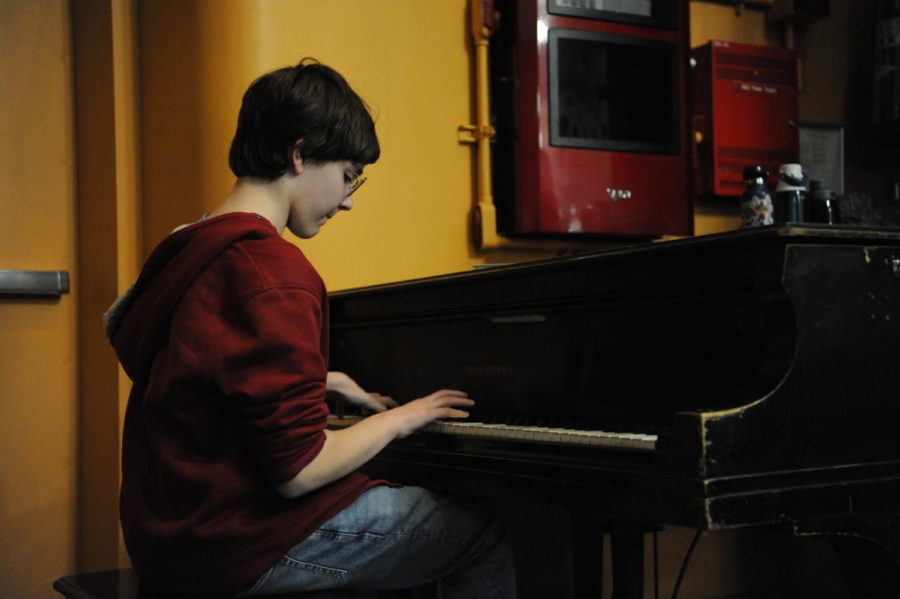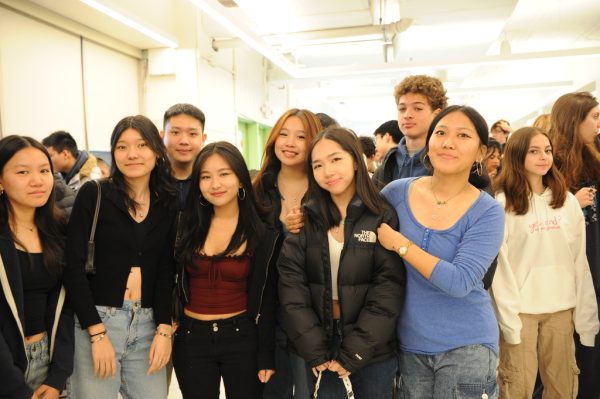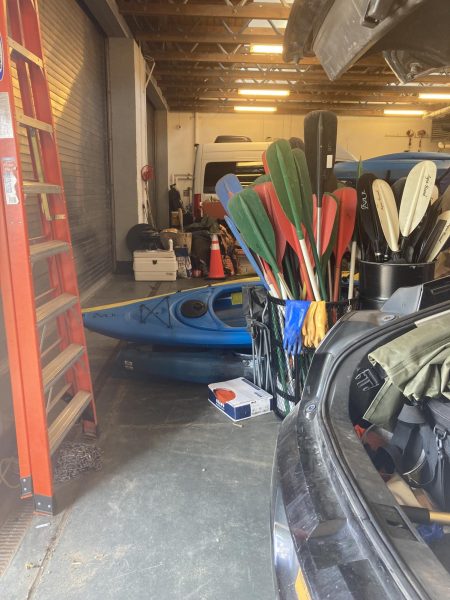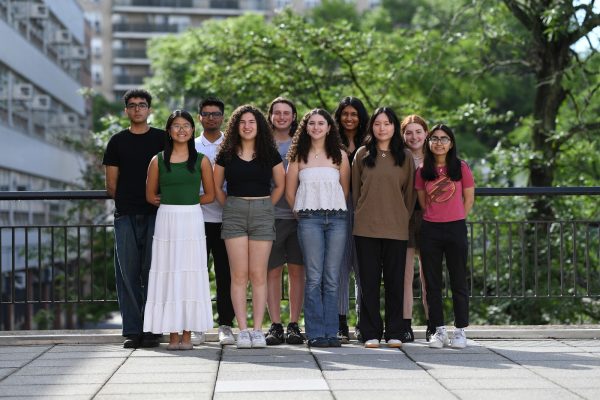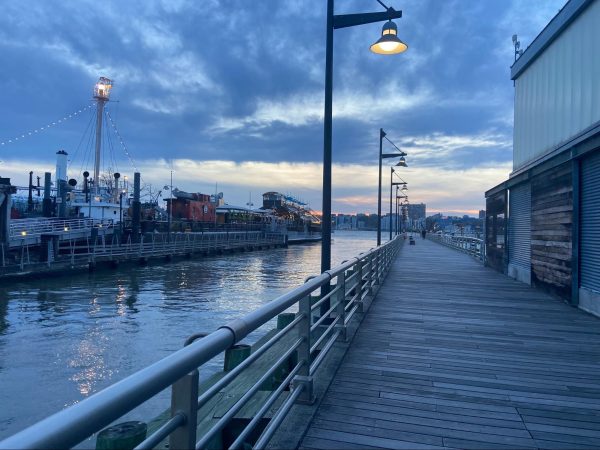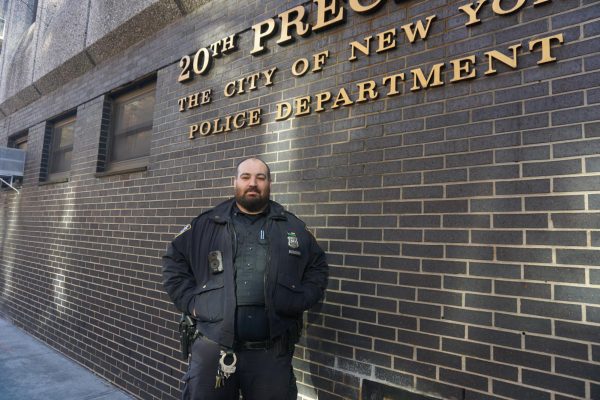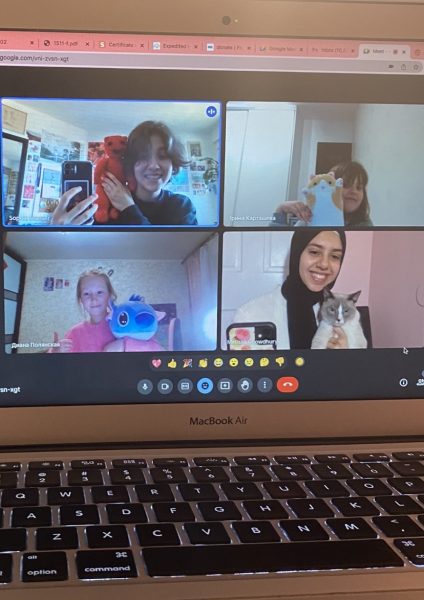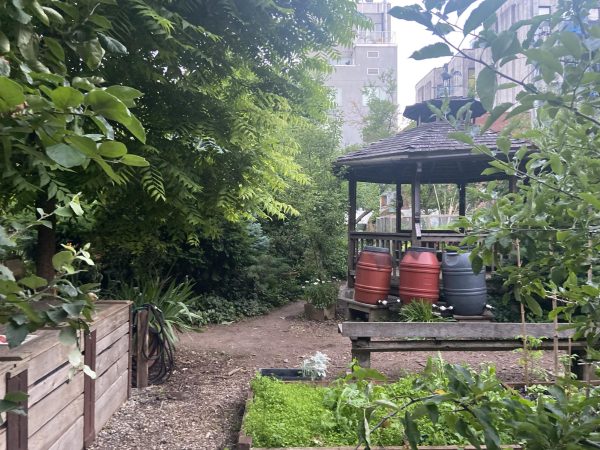Arts at Bronx Science
How do Bronx Science students explore Arts at a school dedicated to the Sciences?
Augustus Alexander ’25 plays the piano masterfully in the Bronx Science Auditorium. Pianists are attracted to the piano throughout all periods, but especially in the mornings before school. Sometimes, guitarists will sit on stage and strum a melody. They play soft music at times, which proves a quiet ambience during mornings, and other times a powerful melody drawing your attention, and your undivided attention.
Mornings at Bronx Science bring a duality of students, one hectic and filled with movement all around, and the other orderly, organized, and quiet. Amidst the sea of students that fill the halls of Bronx Science, the cafeteria is always bustling, filled with students discussing their next big test or excitedly planning an outing with their friends. However, if you were to saunter into the auditorium between 7:30 a.m. and 8 a.m., you’d see students intently working, squeezing in a homework assignment before the day officially starts. Then suddenly, you might hear a melody playing.
The musicians of Bronx Science always flock to the grand piano located at the front of the auditorium. Their fingers dance along the keys. It’s here that you will find yourself serenaded by melody upon melody, unable to do anything except applaud after their song. If you were unaware of the fact that Bronx Science was a school dedicated to science, the dimly lit stage, resplendent ceiling lights reflecting on the piano, and the siren’s song played by the pianist just might be enough to convince you that you had walked into a school dedicated to the arts, rather than “science” as stated in our school name.
Bronx Science prides itself on its rigorous and college-ready curriculum, consisting of numerous AP-level and honors-level courses across STEM and the Humanities. From Forensic Science to Green Design to Algorithms, the ability to enrich your schedule with diverse options is various and many Bronx Science students take advantage of these opportunities. In the same vein, while less known, there are also many options for students interested in the Arts. From Jazz Band to Photography, to Digital Music Lab, Bronx Science is a place where you can make various arts a part of your daily life should you choose to do so.
There are also various opportunities to engage in the arts outside of your scheduled periods. While performing at the Winter Concert or Chorus requires a period of practice, taking part in S!NG, or the school productions that happen which you practice for outside of school. With these productions, there are various avenues of participation either as an actor, director, writer, or part of the backstage crew, all of which allow you to engage with the creative process of film in a meaningful way. If you’re interested in less conventional art forms, there are a myriad of clubs from Green Room to Knitting Club to Edible Arts to explore your creative passions.
Many Bronx Science students find themselves pursuing these passions outside of school as well.
Mollie Ehrenberg ’23 enjoys crocheting in her free time. She said, “For me, the most important part is deciding what to make. Once I decide what to make I can look for a pattern and choose my yarn. Depending on what I’m making, sometimes I’ll just start crocheting and figure out my pattern as I go, but I like having an idea in my head of what it should look like. I crochet gifts for friends’ birthdays and for myself when I have time.”
The creative process is complex and tailored to each individual. For Mollie, it’s about visualizing an end product and moving toward that goal. For others, it may be discovering a result as you go. There are no wrong ways to approach the creative process — such is a staple across art forms. Finding different reasons to practice also helps keep your passion invigorated and meaningful.
Dinah Landsman ’23, a visual artist, explains, “Bronx Science is not immediately an environment in which I feel my artistic side can thrive. However, the school does provide fantastic space for people to make their own opportunities, which I have done through starting my zine, ‘The Green Room.’”
Club activities are a great way to try out the arts as well. Clubs are a great way to introduce yourself to possible interests without committing to them.
While the school’s own support systems can enable an environment that is conducive to engaging in the Arts, it is an incorrect assessment to state that it is the only factor in making it so.
“Bronx Science offers New York City’s most creative student body, and I mean that entirely. I think that it’s pushed me to find my people, so to speak, and I’m so much better at it. We pursue our art in a shared space that we’ve carved out with one another,” Landsman adds.
Connecting with other individuals with similar interests can be a great way to nurture a love for an art form. Through the communication of ideas, active participation, and a dedication to the craft, you can create an environment that is fueled by the love for art and carries out the creative process in different ways. You will find such an environment in many clubs because the passion for the art stems from a deep admiration of the art form rather than for a grade.
Landsman said, “Art will always be a massive part of my life, because it’s how I express myself. Regardless of the medium, I always find myself creating which brings me absolute peace. In the future, I hope to become a forensic pathologist, and as such, medical drawings have always been an extreme area of interest — undoubtedly something that won’t change. I make art at every available opportunity, and absolutely see myself utilizing it as a medium in the future.”
The barrier of entry to art is admittedly daunting in the school setting where you may be evaluated on the scale of your ability. Perhaps one may feel that they aren’t good enough to join a club. This is definitely not true, as you can join clubs of interest at any level. You can easily start as a beginner and cultivate your ability with people with different levels of skills. It ends up being an excellent way of growing from your peers who have more experience than you, while also growing with those who are taking their first steps.
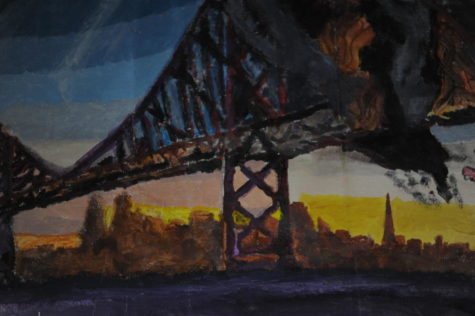
Another way to introduce yourself to different art forms would be to start at home. From personal experience, starting at home can help introduce yourself to different art forms. There are many great resources at your fingertips that can truly help step into the world of art, such as YouTube videos, which can range from learning to read sheet music to playing a basic melody. If you don’t have access to a piano, there are resources online such as a virtual piano. Albeit, it is nowhere near as good as the real thing. However, it is a great way to introduce yourself to music and discover whether you love playing. If you love playing there, then you will love playing on a real piano! It can be a good factor in helping you decide whether you want to invest in a piano or art.
“There are some really good YouTube tutorials to get started, but I think it’s fun to learn from someone in person,” Ehrenberg said. This advice is great for anyone who is connected to friends or parents who are doing something that you are interested in.
In the age of STEM, it’s becoming increasingly important that we nurture a place for art as a commonplace throughout our schools and homes. The arts, like many of the humanities, are a critical tool in helping us express ourselves and depicting the human condition. They are a hallmark of our history and a tapestry of our experiences. Students, especially now, have the power to step into schools and change how much of the arts are represented. To those interested in learning to draw, play piano, crochet, paint, write, or anything really, seek out resources within your school or communities! In taking a leap, you may find a lifelong hobby that becomes a form of self-expression and a means to connect to others.
“Bronx Science offers New York City’s most creative student body, and I mean that entirely. I think that it’s pushed me to find my people, so to speak, and I’m so much better for it. We pursue our art in a shared space that we’ve carved out with one another,” said Dinah Landsman ’23.
William Fernando is a Copy-Chief for ‘The Science Survey.’ William believes the gift of journalism is its undeniable ability to share moving and valuable...

